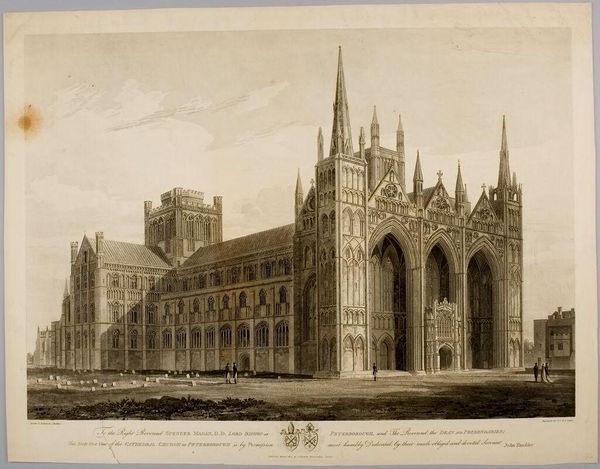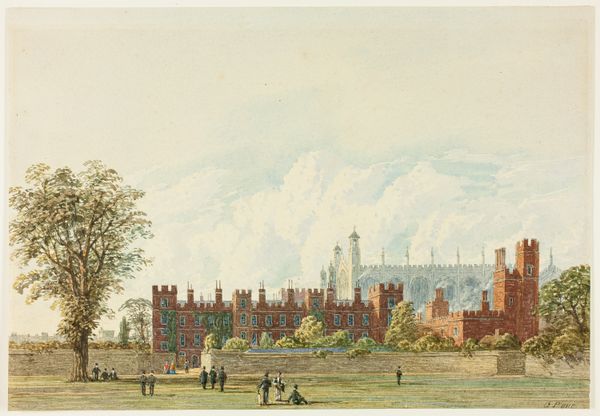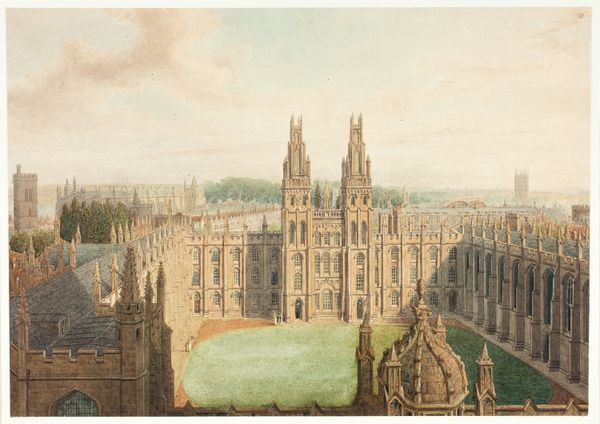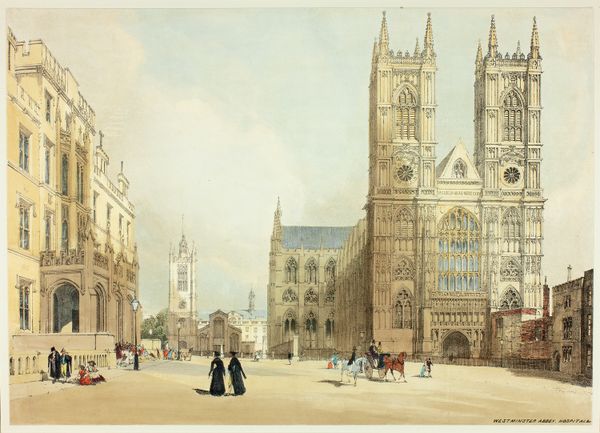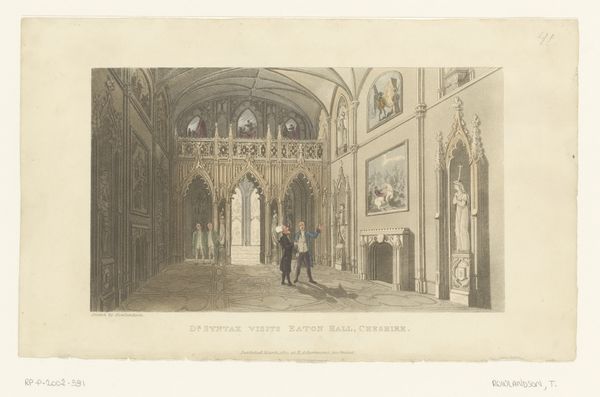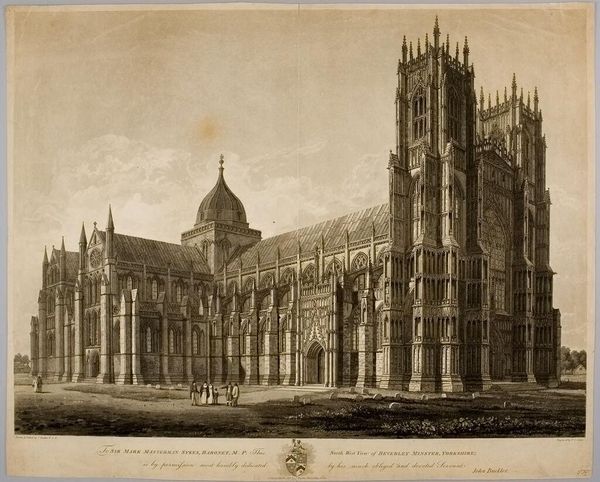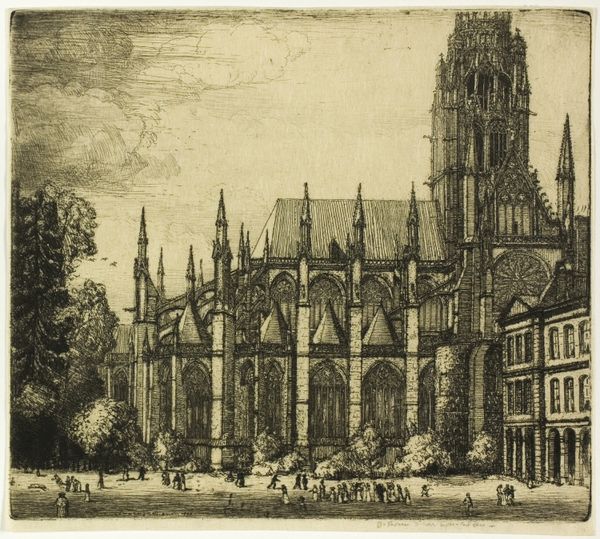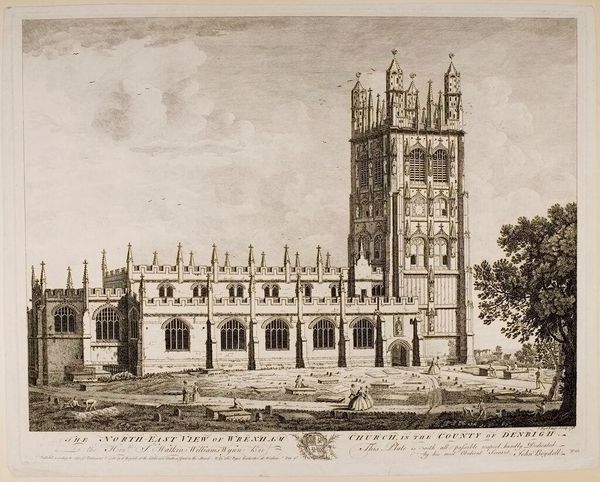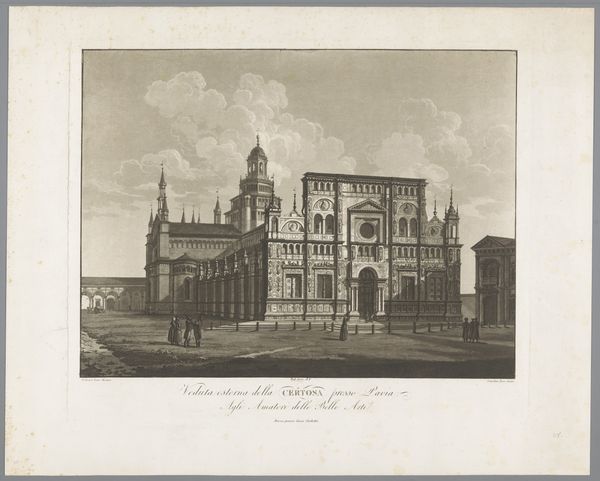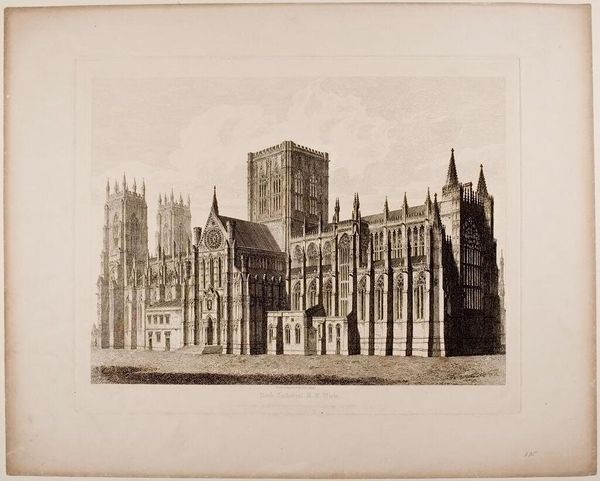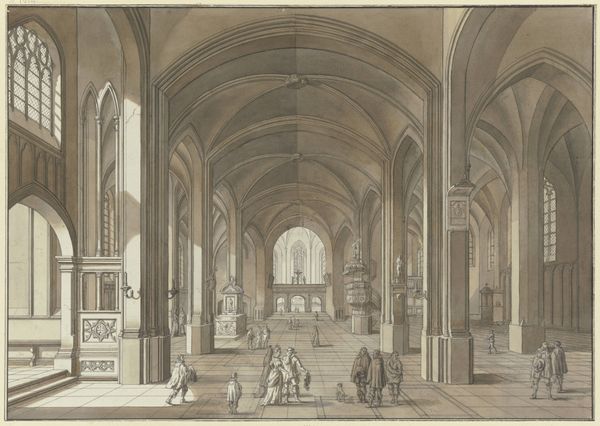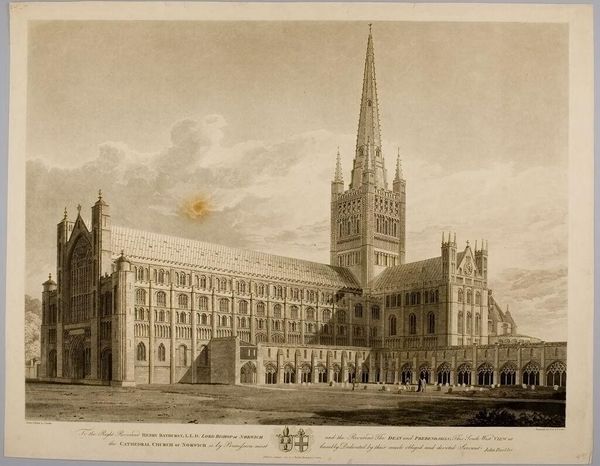
South Side of King's College Chapel, Cambridge 1815 - 1820
0:00
0:00
drawing, painting, print, gouache, paper, watercolor, graphite
#
drawing
#
neoclacissism
#
painting
# print
#
gouache
#
landscape
#
paper
#
watercolor
#
coloured pencil
#
water
#
graphite
#
cityscape
#
botanical art
#
realism
Dimensions: 180 × 273 mm
Copyright: Public Domain
Curator: This watercolor and gouache work on paper is titled "South Side of King's College Chapel, Cambridge," created between 1815 and 1820 by Frederick MacKenzie. It's quite a stately example of cityscape drawing, held here at the Art Institute of Chicago. Editor: Wow, it’s almost dreamlike, like looking at Cambridge through a sepia-toned lens. The details of the chapel are so intricate, but there’s this hazy, almost ethereal quality about the whole piece. What sort of paper and watercolor combination would give that effect? Curator: I imagine he was drawn to the challenge of depicting such a large, intricate structure. The materiality would have been crucial. He needed a paper that could take the washes of watercolor but also hold the detail afforded by the gouache and possibly even graphite for preliminary sketching. The layering would create that atmospheric perspective. It’s also worth noting the economic implications: high-quality paper and pigments weren't always accessible, reflecting a certain privilege in art production at that time. Editor: It makes you wonder about MacKenzie's relationship with the place itself, too. The way the light hits the stone – there's a real sense of reverence, but also this kind of detached observation. Like he’s capturing the scene, not necessarily participating in it. Is there something cold and impersonal about neoclassical architectural drawings like this, you think? Or is that unfair? Curator: I think that distance can also be seen as careful documentation. He’s capturing the college in a specific moment. The figures on the lawn add scale, yes, but also hint at the function of the building and its social role. We are talking about Cambridge after all. I like thinking about how buildings themselves embody societal power dynamics, how the act of depicting these grand structures serves as an endorsement, even an implicit celebration, of those hierarchies. Editor: Fair point. Though to me, beyond the statement, this is one man’s personal experience distilled in ink and color on paper, one little quiet day given back to us almost two centuries later. Curator: Exactly. So we’ve moved beyond simply aesthetic contemplation and seen its connection to economic status of its maker and those who appreciate it now, to questions about the depiction of labor. A good thing, I would say. Editor: I agree. Looking closer like that… It makes even old stones come alive a little, don't you think?
Comments
No comments
Be the first to comment and join the conversation on the ultimate creative platform.


